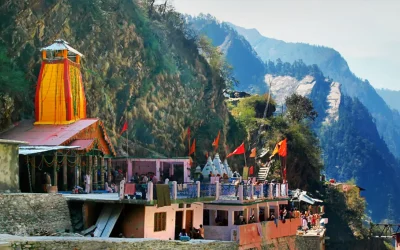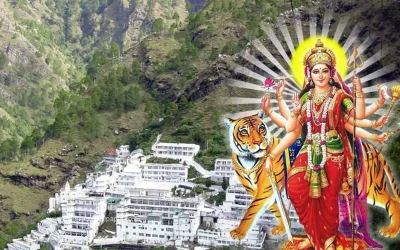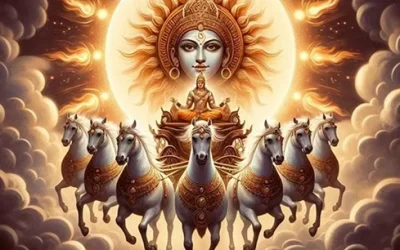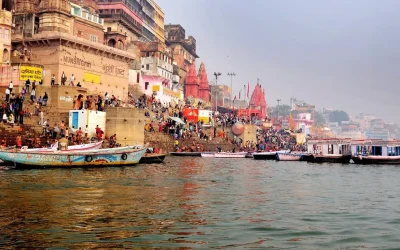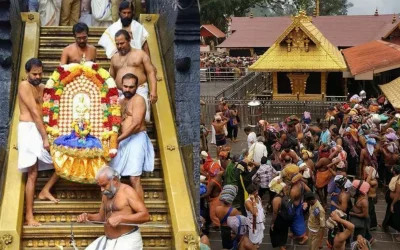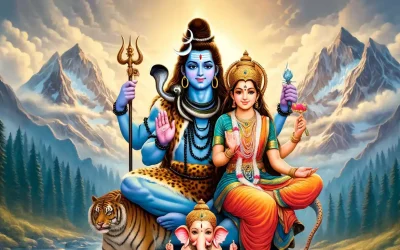History of Puri Jagannath Temple
Odisha, a land steeped in spirituality and ancient traditions, is home to the illustrious Jagannath Temple. This timeless testament to devotion and architectural mastery, nestled in the heart of the temple town of Puri, serves as the epicentre of the Jagannath cult. Its global appeal draws devotees from all corners of the world, uniting them in their reverence for the Lord of the Universe.
Constructed in the 12th Century AD, the Jagannath Temple is not merely a place of worship but a living monument to faith and ingenuity. Rising majestically on a raised platform, the temple’s colossal presence commands awe and reverence. Its architectural magnificence is a captivating fusion of intricate carvings, towering spires, and sacred symbolism, each element meticulously crafted to inspire devotion and admiration.
As pilgrims traverse the temple’s hallowed grounds, they are greeted by a sight that transcends mere mortal craftsmanship. The temple’s walls, adorned with intricate depictions of gods and goddesses, narrate tales of divine glory and earthly transcendence. Enclosed within two concentric walls, the Kuruma Bheda and the Meghnad Pachira, the temple stands as a bastion of spiritual sanctity, offering solace to seekers and solace-seekers alike.
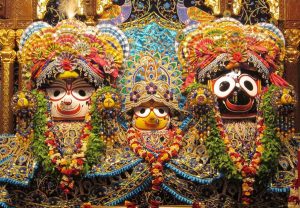
At the eastern threshold lies the Singhadwara, the main entrance to the temple, beckoning pilgrims with its grandeur and grace. Yet, as one gazes upon the temple’s facade, it becomes evident that every feature serves a sacred purpose. The temple’s design is imbued with profound symbolism, with every stone and sculpture resonating with spiritual significance.
The Jagannath Temple’s architectural marvels extend beyond its outward appearance to its inner sanctum. Within its sacred confines, the divine trinity of Lord Jagannath, Lord Balabhadra, and Devi Subhadra reign supreme, their wooden forms exuding an aura of eternal grace and divinity. Unlike traditional stone or metal idols, these wooden deities embody the essence of mortality as a poignant reminder of life’s transient nature.
Among the temple’s most revered treasures is the Nilachakra, a radiant blue wheel perched atop its sanctum sanctorum. Crafted from eight sacred metals, the Nilachakra is believed to symbolize the omnipresence of the divine, offering solace and salvation to all who behold it. Similarly, the Patitapabana, or sacred flag, defies the wind’s direction, its daily changing ritual a testament to the timeless devotion of generations past.
Yet, the most awe-inspiring spectacle is the Aruna stambha, a towering monolithic pillar that stands sentinel at the temple’s entrance. Originally hailing from the Sun Temple of Konark, this majestic structure serves as a beacon of enlightenment, guiding pilgrims on their profound spiritual journey, filled with introspection and self-discovery.
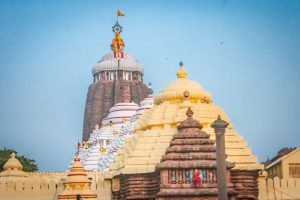
Amidst the temple’s architectural splendour, festivals and rituals breathe life into its sacred halls. The annual Devasnana Purnima, a deeply symbolic event, sees the holy trinity bathed in sacred waters, their divine forms cleansed of earthly impurities. The Chariot Festival, a vibrant celebration held during the months of June and July, sees the Lord venturing onto the streets to bless devotees, transcending barriers of caste, creed, and colour, and fostering a sense of unity and community.
As pilgrims flock to the Jagannath Temple, they are drawn not only by its grandeur but also by the spiritual aura permeating its sacred precincts. Here, amidst the echoes of ancient chants and the fragrance of sacred incense, they find solace for their souls and nourishment for their spirits.
In the heart of Odisha, amidst the timeless sands of Puri, stands a monument to faith and devotion that transcends the boundaries of time and space. The Jagannath Temple, with its architectural splendour and spiritual sanctity, stands as a beacon of hope and enlightenment, guiding pilgrims on their journey towards divine grace and eternal salvation.

